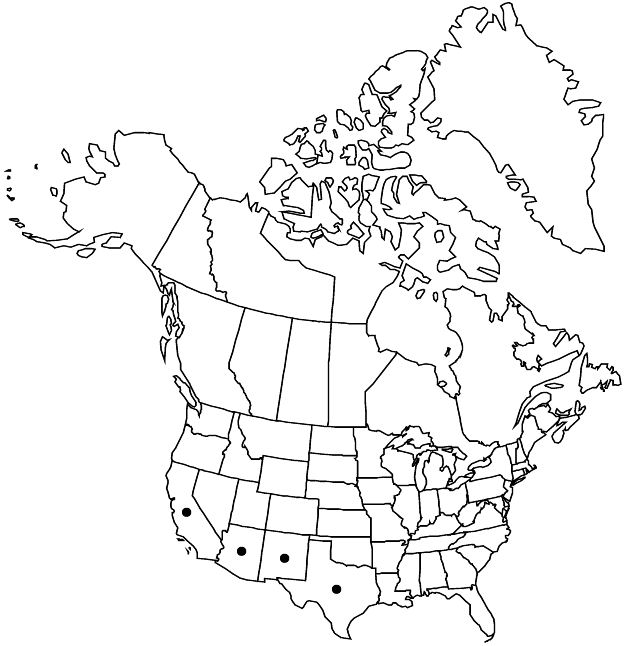Oxalis latifolia
in A. von Humboldt et al., Nov. Gen. Sp. 5(fol. & qto.): plate 467. 1822.
Herbs perennial, acaulous, rhizomes and stolons absent, bulb solitary; bulb scales (5–)7–9(–11)-nerved, inner thickened, white, margins hyaline. Leaves basal; petiole (6–)10–25 cm; leaflets 3, green, obtriangular to obcordate, (15–)25–40 mm, lobed 1/5–1/2 length, lobes apically rounded, surfaces glabrous, oxalate deposits absent. Inflorescences umbelliform cymes, (3–)6–10(–12)-flowered; scapes (7–)10–20(–30) cm, glabrous. Flowers usually tristylous, rarely homostylous; sepal apices with 2 orange, short to elongate, not confluent tubercles; petals white to pale green proximally with green veins, purple to lavender or pink distally, 9–12 mm. Capsules cylindric, 4–6 mm, glabrous. 2n = 14, 28, 42.
Phenology: Flowering Jun–Sep(–Oct).
Habitat: Rocky slopes, ledges and crevices, ridge tops, canyons, sandy washes, flood plains, mesquite-baccharis, mesquite-acacia, hackberry-willow, oak-juniper-pinyon, oak-maple, or pine-oak woodlands.
Elevation: (1100–)1300–2200(–2800) m.
Distribution

Ariz., Calif., N.Mex., Tex., Mexico, introduced in West Indies, Europe, Asia (Pakistan), Africa (South Africa), Atlantic Islands (Canary Islands), Pacific Islands (New Zealand), Australia.
Discussion
Collections of Oxalis latifolia from trans-Pecos Texas and eastern New Mexico were mostly identified by M. F. Denton (1973) as O. alpina and O. drummondii. Oxalis latifolia in the narrow sense (type from Campeche, Mexico), with somewhat angular leaflets, occurs in Mexico as far north as Veracruz, San Luis Potosí, and Tamaulipas. The northern populations tend to have more rounded leaflets and perhaps may be better identified by a different name, but they are neither O. alpina (with bulblet clusters) nor O. drummondii (with three-nerved bulb scales).
M. F. Denton (1973) observed that Oxalis latifolia probably consists of several races and perhaps hybrids with other species. A. Lourteig (2000) recognized four subspecies of O. latifolia. Her concept of subsp. latifolia restricted it to South America and the West Indies (even though the type was collected in Mexico); subsp. schraderiana (Kunth) Lourteig is entirely South American; and subsp. vespertilionis (Zuccarini) Lourteig occurs in montane Mexico south to Guatemala. She recognized subsp. galeottii (Turczaninow) Lourteig as occurring from Mexico into the United States. In contrast, most others have treated O. galeottii Turczaninow as a distinct species of central and southern Mexico, broadly sympatric with O. latifolia.
Selected References
None.